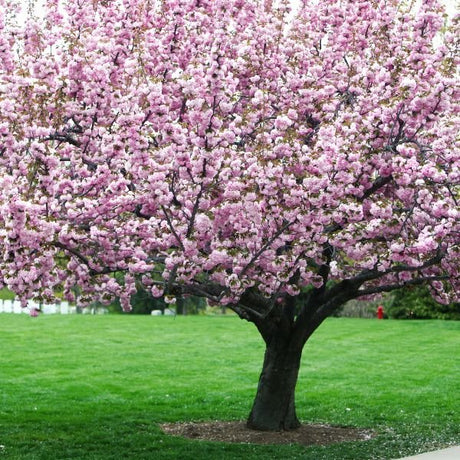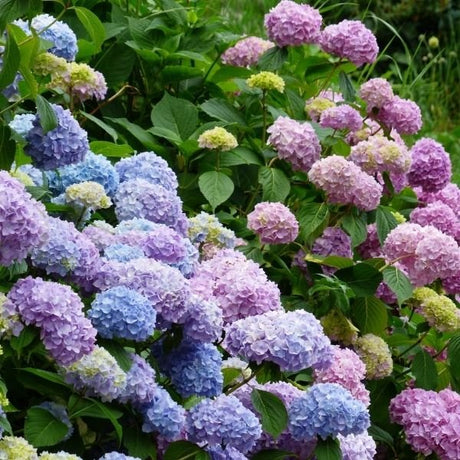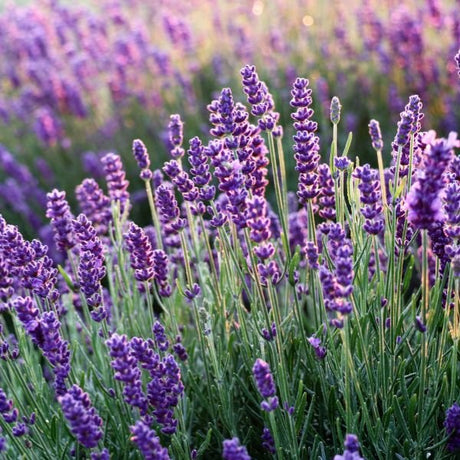Cara Cara Sweet Orange Tree
- Stay Protected with Plant Sentry ™
Cara Cara Sweet Orange Tree - 4x4x9 Inch Container 1-2 Feet is backordered and will ship as soon as it is back in stock.
To receive an email notification when our next crop is ready, please enter your email below..*
Plant Sentry™
Plant Sentry™
Plant Sentry is designed to protect both consumers and the nursery trade from invasive plant pests and diseases. Sites that display the Plant Sentry protection badge are protected from consumers buying and nurseries shipping material carrying invasive pests and diseases.
This proprietary eCommerce software prevents the shipment of a restricted plant to each state. The Plant Sentry system includes a shipment certification program. The Plant Sentry Compliance Officer works closely with NatureHills.com and each nursery or fulfillment center to ensure only compliant plants are sold to customers.
Click Here to learn more

Delivery and Shipping
Delivery and Shipping
Shipping
To obtain a more accurate shipment time-frame, simply enter your zip code in the “Find Your Growing Zone” box to the right. Our plants are grown all over the country and lead time on items may be different because of this. Once your order is placed, you will also receive the specific shipment time-frame information as part of your order confirmation. Once an item ships, you will receive shipment notification and tracking numbers, so you can follow along while your plant travels to your doorstep. We use FedEx, UPS, or USPS at our discretion.
Due to winter weather we have put a hold on shipping to the areas shown below in grey. You can still order now and we will ship the plant to you during an appropriate time for your zone.
Standard Shipping Rates
At Nature Hills we handle, package and ship the products you order with the utmost care to ensure healthy delivery. Shipping and handling charges are calculated based on the tables below. Please note that some items include an additional handling surcharge, these will be noted on the item's product page.
| From | To | S&H |
|---|---|---|
| $0 | $19.99 | $24.99 |
| $20 | $49.99 | $29.99 |
| $50 | $69.99 | $34.99 |
| $70 | $99.99 | $39.99 |
| $100 | $129.99 | $44.99 |
| $130 | $149.99 | $48.99 |
| $150 | $150+ | Approx 28% |
Click here to see our full rates
Buying Options for Plants
Nature Hills sells a large variety of plants with several options available. Plants are offered in both potted containers and as dormant bare root without soil. Here is a helpful resource to understand your options as you create a beautiful landscape with help from Nature Hills.
Ever wonder what a larger plant will mean for your landscape? Container Sizes are really all about the age of the plant!
Seasonally, Nature Hills offers hand selected, high quality bare root trees, shrubs and perennials. Bare root plants are sold by height from the top of the root system to the top of the plant. Plants may be taller than the height minimums.
- Popular sizes of select trees are 1 foot, 2 feet, 3 feet, etc.
- Popular sizes of select bare root plants is 1 foot, 18 inches, etc.
Nature Hills Container Size by Volume
Keep in mind, specific varieties and different growing conditions can affect the rate at which plants grow. Variations in size may occur.
| Young Plants to 18 Months | ||
|---|---|---|
| Size | Volume | |
| 2"x2"x3" | Ranges from | .18 to .21 dry quarts / .198 to .23 dry liters in volume |
| 4.5" Container | Equal to | .65 dry quart / .72 dry liter in volume |
| Sprinter Pot | Equal to | .63 dry quart / .69 dry liter in volume |
| 4" Container | Ranges from | .31 to .87 / .35 to .96 dry liter in volume |
| 6" Container | Equal to | 1.4 dry quarts / 1.59 dry liters in volume |
| 1 Quart | Equal to | 1 dry quart / 1.1 dry liter in volume |
| 5.5" Container | Equal to | 1.89 of a dry quart / 2.08 dry liters in volume |
| 4"x4"x5" | Ranges from | .8 to 1.1 dry quarts / .88 to 1.2 dry liters in volume |
| 4"x4"x6" | Ranges from | 1.0 to 1.3 dry quarts / 1.1 to 1.41 dry liters in volume |
| 4"x4"x9" | Ranges from | 1.1 to 2.1 dry quarts / 1.2 to 2.3 dry liters in volume |
| 4"x4"x10" | Ranges from | 1.7 to 2.3 dry quart / 1.87 to 2.53 dry liters in volume |
| Plants 18 Months - 2.5 Years Old | ||
|---|---|---|
| Size | Volume | |
| 2 Quart | Equal to | 2 dry quarts / 2.2 dry liters in volume |
| #1 Container | Ranges from | 2.26 to 3.73 dry quarts / 2.49 to 4.11 dry liters in volume |
| 5"x5"x12" | Equal to | 3.5 to 4.3 dry quarts / 3.85 to 4.74 dry liters in volume |
| Plants 2 - 4 Years Old | ||
|---|---|---|
| Size | Volume | |
| #2 Container | Ranges from | 1.19 to 1.76 dry gallons / 5.24 to 7.75 dry liters in volume |
| #3 Container | Ranges from | 2.32 to 2.76 dry gallons / 10.22 to 12.16 dry liters in volume |
| Plants 3 - 5 Years Old | ||
|---|---|---|
| Size | Volume | |
| #5 Container | Ranges from | 2.92 to 4.62 dry gallons / 12.86 to 20.35 dry liters in volume |
| #6 Container | Ranges from | 5.25 to 6.01 dry gallons / 23.12 to 26.42 dry liters in volume |
| #7 Container | Ranges from | 5.98 to 6.08 dry gallons / 26.34 to 26.78 dry liters in volume |
Plant Highlights
Cara Cara Sweet Orange Tree highlights at a glance!
Plant Highlights
Plant Highlights
-
Brand
-
Botanical Name
-
Growing Zones
-
Mature Height
-
Mature Spread
-
Sun ExposureFull Sun
-
Moisture
-
Soil
-
Growth RateMedium
-
Flower Color
-
Pollinator Friendly
-
Pollinator Required
-
Fragrant
-
Pruning Time
-
Bloom PeriodLate Spring
-
Harvest Time

Growing Zones 9 - 10 (patio 4-10)
We don't mean to get all existential on you here, but does orange juice have to be orange? Can an orange taste like a berry? Can it look like a grapefruit? The answers to these questions are yes, Yes, and YES! Say hello to the Cara Cara Sweet Orange Tree (Citrus x sinensis 'Cara Cara')!
Discovered in the 1970s, the Cara Cara didn't hit American markets until the '80s and even then it was only in specialty grocers. It still isn't widely known or widely grown, but we here at Nature Hills want to change that. We don't think we're overselling it to say that Cara Cara could be life-changing for you! With evergreen foliage and fragrant white blossoms for pollinators, these are gorgeous trees on their own!
Once you cut into it, though, you will never forget it! The flesh is pink like the sparkling rose of Pink Grapefruit. It is super juicy and the juice is pink, too. Cara Cara doesn't taste like your traditional Orange. Some people say they taste raspberry, blackberry and cranberry!
Planting and Application:
Perfect for citrus growing regions of the US, Cara Cara is also great in pots by a sunny window in cold winter climates Either way, you’ll enjoy a fantastic patio plant or poolside for year-round greenery! Modestly sized trees at maturity, they work in almost any sized yards and can be pruned smaller as needed!
Cara Cara are broadleaf evergreens that are fantastic privacy and screening when planted in rows and shelterbelts, alone or with other types of citrus and fruit trees for your own property-defining orchard! As a stand-alone tree, these are gorgeous specimens and accents that add curb appeal to your home's front yard landscaping!
- Sparkling Pink Flesh & Pink Juice
- Sweet Berry-Like Flavor
- Low Acid & Seedless
- Perfect for Pots
- Containers, Specimen & Privacy
#ProPlantTips for Care:
Fruit trees need full sun for the most flowers and fruit! Plant in slightly acidic soil that’s very well-drained. The long harvest all winter and spring, means you’ll enjoy months of healthy delicious fruit! Provide regular water for young trees, but allow the roots to dry out slightly between waterings, but once established, Cara Cara Oranges are low-moisture needs plants.
Protecting Container Citrus From Cold
Although it's famous for growing in warmer regions, it can also thrive in colder areas as long as the tree is brought indoors prior to the first frost of winter.
If you're growing these tropical trees in the ground in the lowest of their favored growing zones, they need to be planted in a sheltered spot to avoid the worst of the chill. If a spot like that is unavailable, then you are better off planting in a large, deep container.
In borderline growing zones, begin slowly acclimating your tree indoors or into a protected location, eventually moving your tree inside in bright indirect sun for the winter if the temperatures in your area ever dip below that 40°F range. In spring, reverse this process and begin acclimating your tree to again be back out in the full sun all summer. This reduces stress and leaf drop.
- Full Sun
- Acidic Well-Drained Soil
- Provide Regular Fertilizer
- Prune After Fruiting
Cara Cara Sweet Orange Tree are just now hitting the home gardening scene and are going to going fast. Order your today and after you've bitten into your first slice of Cara Cara give us a call and thank us!
Ultra-Modern Cara Cara Orange Super Fruit
It is hard to believe that the Cara Cara orange has only been around since the late 1980s. Even with its
Discovered in 1976, it is not quite clear if it was a bud sport of a Washington Navel Orange or the result of an open-pollinated cross of Washington Navel with the Bahia Navel Orange. What is clear is that the people who discovered this Red Fleshed navel orange knew just what they had, and wasted no time in propagating, planting and promoting it.
The first budwood would be received at the Florida Budwood Registration Program in 1988, from Hacienda Cara Cara in Valencia, Venezuela; the location it was discovered. Around this same time, budwood was sent to the Lindcove Research facility in California. But the selection was met with caution. The immediate concern was that the red/pink flesh was not stable and would possibly revert to an orange color.
Through the 1990's, under the observation of both the Lindcove and Riverside, U.C. Citrus research stations, as well as a limited number of commercial plantings; the Cara Cara Orange was eventually determined to be stable in color. At this same time, it had been regularly sampled by farmers for years and its introduction was highly anticipated.
On the fast track for introduction, the early ripening Cara Cara Orange was heavily planted throughout California where it had been determined to be a superior variety. Cara Cara has grown from a novelty in the early 2000's to today being a highly sought after selection.
As with all red-pigmented fruits the Cara Cara is considered a very healthy fruit with its high concentration of Lycopene, a well know carotenoid in the family of Beta Carotene. It is also high in fiber and as with all oranges high in vitamin C; which makes this fruit a must for the modern-day health-conscious food shoppers.
The flavor is very complex almost berrylike with a sub-acid finish. Being seedless only adds to the many qualities of the Cara Cara. Finally, being the first of the oranges each season gets the year off on its best note.










